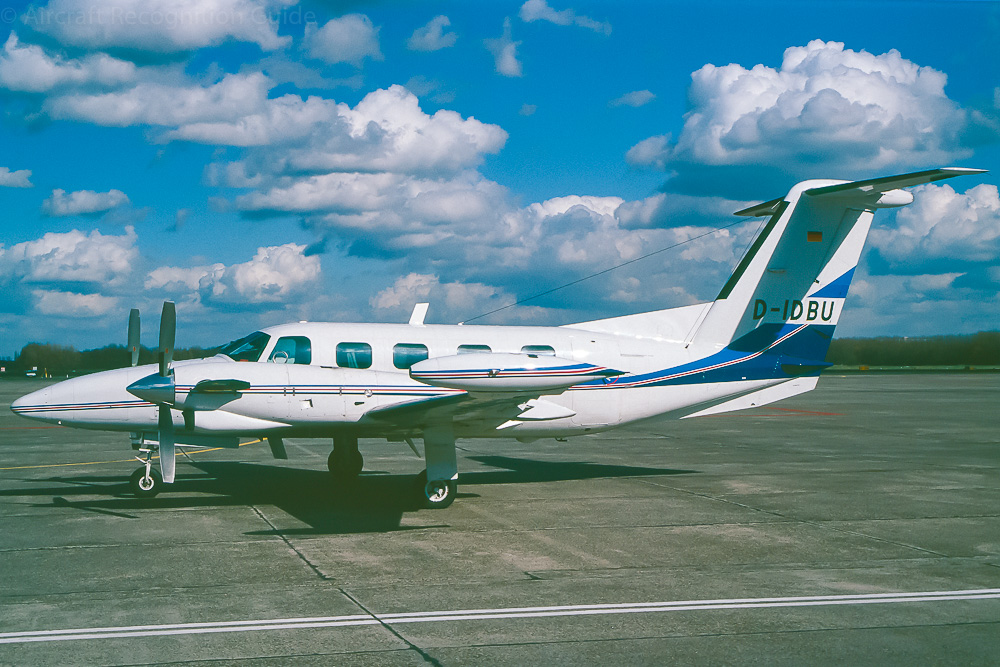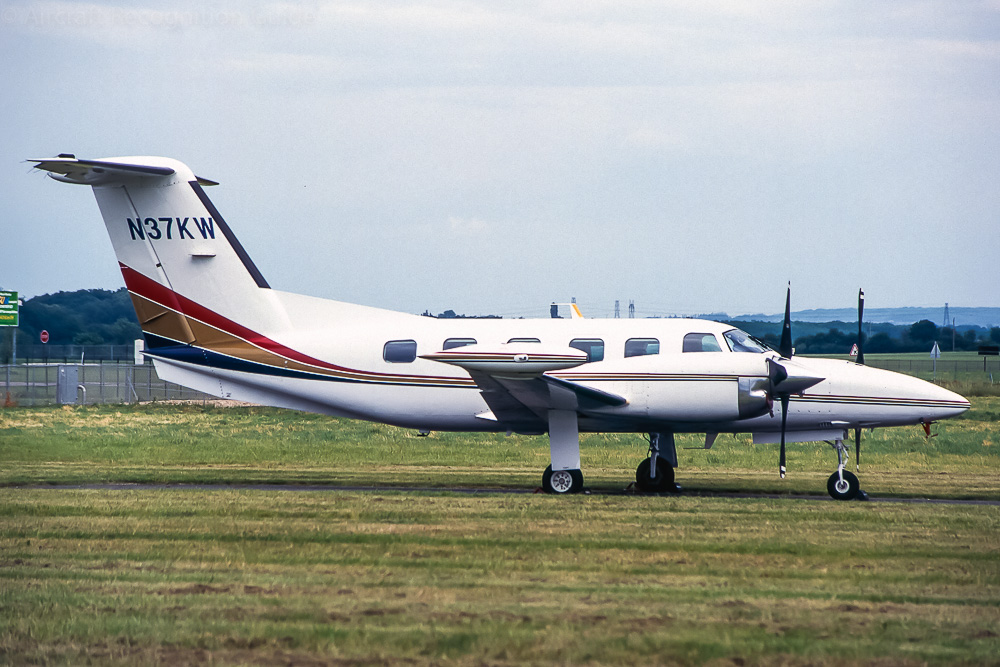
Piper PA-42
With the PA-42 Piper Aircraft created a better competitor for the Beechcraft Super King Air, for which the Cheyenne II was not really a match. Initially the PA-42 was to be a non-pressurised PA-31-350 with turboprop engines, tip tanks and a T-tail. However, the final version was more based on the PA-31T Cheyenne, so pressurised, and with a longer fuselage. It has the same cockpit windows and large rectangular cabin windows with rounded corners. New is the T-tail, that is quite tall and has a big dorsal fin. Other characteristics are single wheels on all landing gear legs, tip tanks and a long ventral fin.
Different versions
The different versions of the PA-42 are recognised by
- the shape of the engine nacelles
- the number of blades on the props
- the shape of the nose
- the presence of horizontal ventral fins
PA-42 Cheyenne III
The first Cheyenne III is powered by 720hp Pratt & Whitney PT6A-41 engines. They are housed in long nacelles extending from the nose gear until beyond the wings. The air intake is at the bottom of the nacelle while the exhausts are on ether side of it, just behind the props. Typical for these engines is a cooler inlet after the exhaust, a but more to the top of the nacelle. Also this version of the PA-42 has small horizontal ventral fins, at the sides of the tail cone. For a full view of this subtype see the header photo.
The nacelles of the Cheyenne III a very long, about 40% of total length of the aircraft. Typical for this version is the extra intake behind the exhaust.
PA-42-720 Cheyenne IIIA
Apart from a more modern interior, the Cheyenne IIIA has other engines. These are still PT6As, but with more power, although they are flatrated at 720hp. While they fit in the same nacelle, the don't have the (cooler) inlet of the Cheyenne III.
PA-42-720R Cheyenne IIIA
The US Customs & Border Patrol (CBP) and Drug Enforcement Agency (DEA) use Cheyenne IIIAs fitted with a radar nose and FLIR pod under the nose, in front of the nose gear.
The PA-42-720R has a much larger nose than the other PA-42 versions. It houses a search radar. In front of the nose gear is a FLIR pod.
PA-42-1000 Cheyenne 400
The ultimate Cheyenne has more powerfull TPE331 engines and therefore different engine cowlings than the other PA-42 versions. The single exhaust is at the back and the nacelle is also shorter. The engines drive four- or five-bladed props.
The original marketing name was Cheyenne IV, but when LearSiegler bought Piper the name was changed to Cheyenne 400LS. The final name became Cheyenne 400, dropping the LS when LearSiegler sold the manufacturer again.
Confusion possible with
Beech 200/300 Super King Air
The Beechcraft Super King Air is the biggest competitor of the T-tail Cheyennes both on the market and in appearance. Still they are easily distinguished by the round cabin windows and lack of tip tanks, among other differences.
Embraer EMB121 Xingu
While the Xingu is similar in basic appearance to the PA-42, it is significantly smaller. However, cockpit windows are different, cabin windows are smaller and the EMB121 has no tip tanks.
Piper PA-31T Cheyenne

Take away the T-tail and suddenly the PA-31T looks a lot like the PA-42. Apart from the length the tail is however the main difference between both models.








